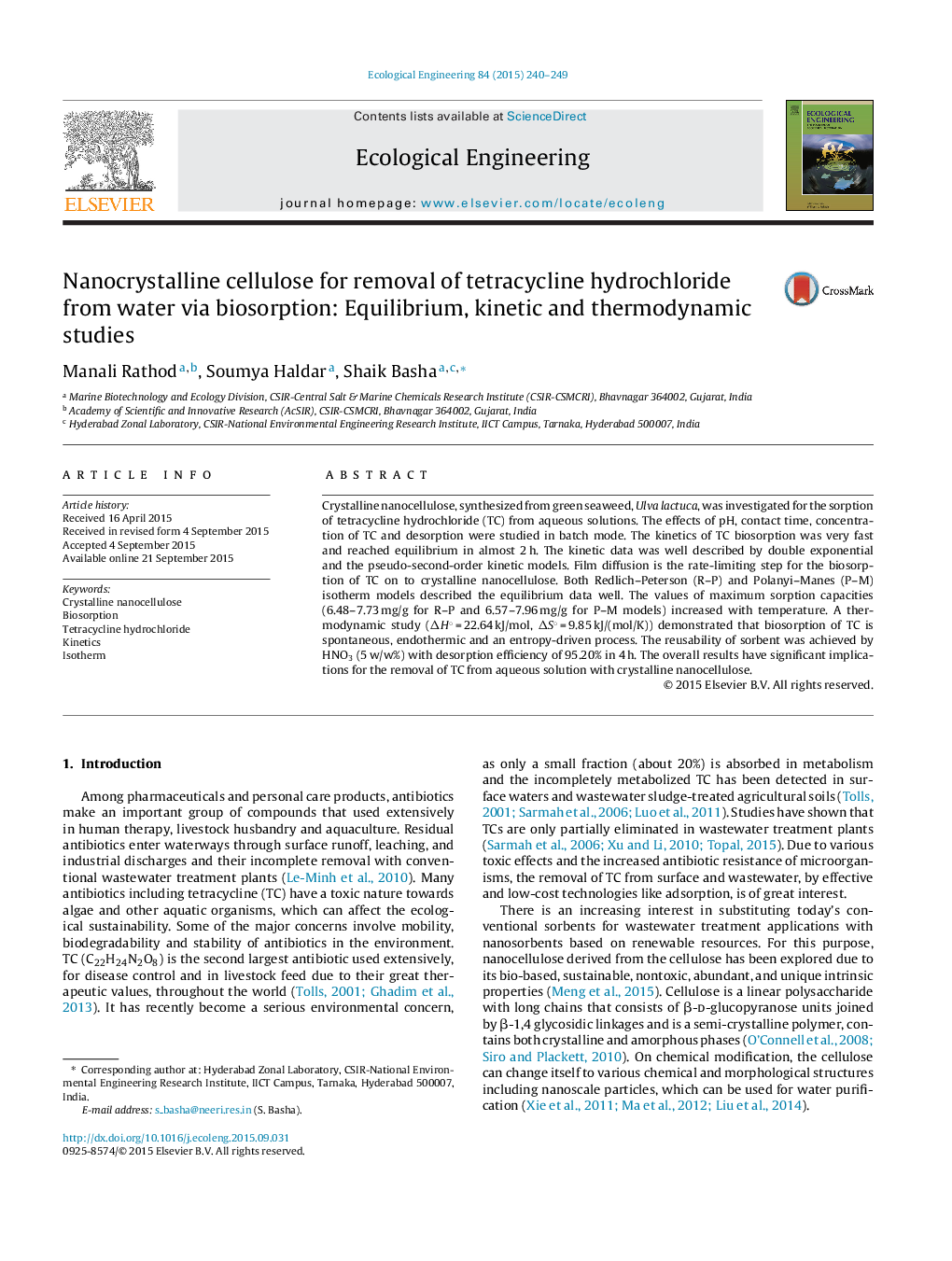| کد مقاله | کد نشریه | سال انتشار | مقاله انگلیسی | نسخه تمام متن |
|---|---|---|---|---|
| 4388789 | 1618015 | 2015 | 10 صفحه PDF | دانلود رایگان |
• Crystalline nanocellulose synthesized from green seaweed, Ulva lactuca remove TC from water effectively.
• Equilibrium, kinetic and thermodynamic study of biosorption of TC onto nanocellulose.
• The crystalline nanocellulose high reusability was confirmed by desorption studies.
Crystalline nanocellulose, synthesized from green seaweed, Ulva lactuca, was investigated for the sorption of tetracycline hydrochloride (TC) from aqueous solutions. The effects of pH, contact time, concentration of TC and desorption were studied in batch mode. The kinetics of TC biosorption was very fast and reached equilibrium in almost 2 h. The kinetic data was well described by double exponential and the pseudo-second-order kinetic models. Film diffusion is the rate-limiting step for the biosorption of TC on to crystalline nanocellulose. Both Redlich–Peterson (R–P) and Polanyi–Manes (P–M) isotherm models described the equilibrium data well. The values of maximum sorption capacities (6.48–7.73 mg/g for R–P and 6.57–7.96 mg/g for P–M models) increased with temperature. A thermodynamic study (ΔH° = 22.64 kJ/mol, ΔS° = 9.85 kJ/(mol/K)) demonstrated that biosorption of TC is spontaneous, endothermic and an entropy-driven process. The reusability of sorbent was achieved by HNO3 (5 w/w%) with desorption efficiency of 95.20% in 4 h. The overall results have significant implications for the removal of TC from aqueous solution with crystalline nanocellulose.
Journal: Ecological Engineering - Volume 84, November 2015, Pages 240–249
